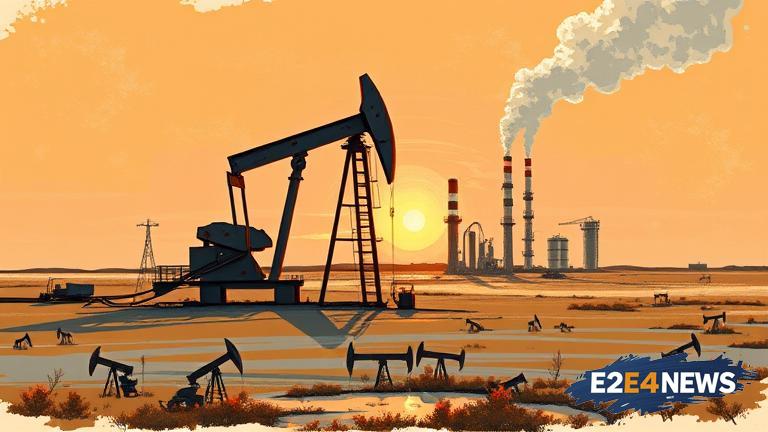North Dakota’s oil production has reached unprecedented levels, with the state’s oil fields producing over 1.2 million barrels per day. This surge in production is largely attributed to the increasing global demand for oil, as well as advancements in drilling technology that have enabled companies to extract more oil from the state’s vast reserves. The Bakken formation, which spans across western North Dakota, has been a major contributor to the state’s oil production, with many companies investing heavily in the region. The increased production has also led to an economic boom in the state, with thousands of new jobs being created in the oil and gas industry. However, the rapid growth has also raised concerns about the environmental impact of the oil production, with many residents expressing worries about the effects on local wildlife and water sources. Despite these concerns, the oil industry remains a vital part of North Dakota’s economy, with many officials predicting that production will continue to rise in the coming years. The state’s oil production has also been boosted by the construction of new pipelines, which have enabled companies to transport oil more efficiently and cost-effectively. The Dakota Access Pipeline, which was completed in 2017, has been a major factor in the increase in production, allowing companies to transport oil from the Bakken formation to refineries in other parts of the country. The pipeline has also helped to reduce the cost of transporting oil, making it more competitive in the global market. As the global demand for oil continues to rise, North Dakota is well-positioned to meet this demand, with its vast reserves and advanced drilling technology. The state’s oil production is expected to continue to play a major role in the global energy market, with many companies investing heavily in the region. However, the industry must also address the environmental concerns surrounding oil production, with many residents calling for greater regulation and oversight. The North Dakota government has implemented various measures to mitigate the environmental impact of oil production, including stricter regulations on drilling and transportation. Despite these efforts, the industry still faces challenges, including the need for greater investment in infrastructure and the impact of fluctuating global oil prices. The oil industry is also working to reduce its carbon footprint, with many companies investing in renewable energy sources and reducing their greenhouse gas emissions. As the industry continues to evolve, it is likely that North Dakota will remain a major player in the global energy market, with its oil production continuing to drive economic growth and job creation. The state’s oil fields are expected to remain a vital part of the global energy landscape, with many companies continuing to invest in the region. The increased production has also led to an increase in tax revenue for the state, with the oil industry generating billions of dollars in revenue each year. The revenue has been used to fund various public projects, including infrastructure development and education initiatives. The oil industry has also had a positive impact on local communities, with many residents benefiting from the economic growth and job creation. However, the industry must also address the social impacts of oil production, including the strain on local resources and infrastructure. As the industry continues to grow, it is likely that North Dakota will remain a major hub for oil production, with its vast reserves and advanced drilling technology making it an attractive location for companies. The state’s oil production is expected to continue to drive economic growth and job creation, with many officials predicting that the industry will remain a vital part of the state’s economy for years to come.
